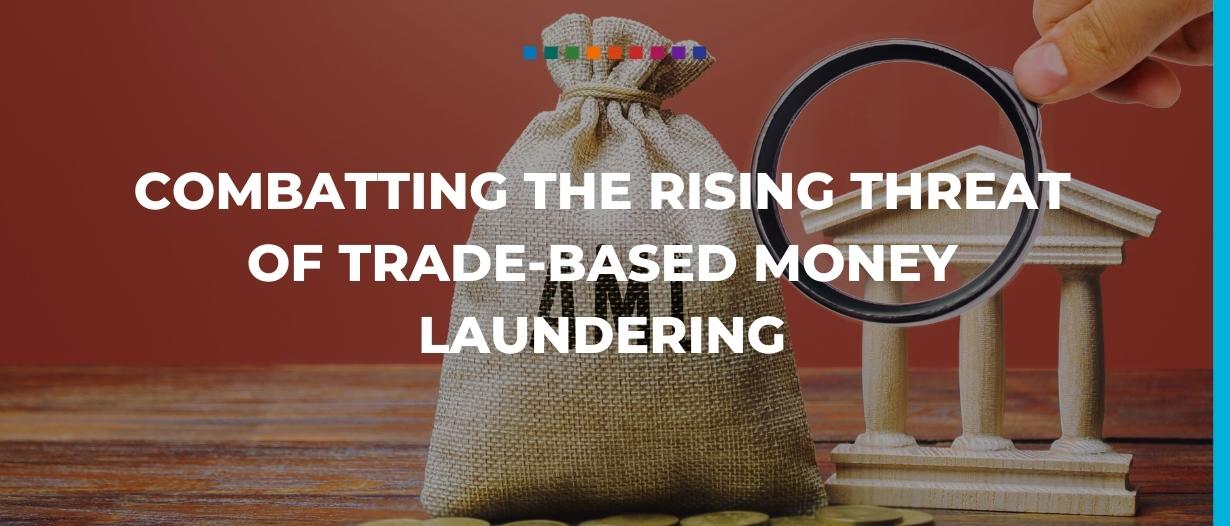Estimated reading time: 5 minutes
Despite the vast benefits offered by the international trade and trade finance systems, there are instances when their powers are not used for good.
One such example is trade-based money laundering (TBML), which can involve any number of exploitive events, from forging trade documents to misclassifying commodities.
Money laundering and international trade
While it is an inherently difficult metric to measure, the Financial Action Task Force (FATF) and the International Monetary Fund (IMF) both estimate that the total value of money laundering in the world lies somewhere between 2% and 5% of the global GDP.
Due to the large volumes of global trade and vast geographic distances involved, TBML is often considered to be the most elusive form of converting illicit money into commercially acceptable cash.
Today, global customs authorities struggle to control the exploitation of international trade for cleaning criminally gained money, mainly linked to narcotics, bribery, corruption, human trafficking, illegal weapon trade, and other societal malpractices.
Before delving into the Anti-Money Laundering (AML) and Combatting the Financing of Terrorism (CFT) measures that regulators use to protect against TBML, it is important to understand the common TBML methodologies and risk indicators.

Common techniques for trade-based money laundering
There are many trade schemes that criminals can use to integrate illegal money into the legitimate financial system.
Over- and under-invoicing of goods and services
By over- or under-invoicing the true value of legitimate goods shipped, money launderers can transfer extra value from one location to another. For this method to work, both the importer and the exporter are complicit in the misrepresentation.
An illegal operation seeking to be legitimised could export a genuine product to a customer with an invoice for the transaction that significantly exceeds the worth of the goods paid for.
Over- and under-shipment of goods
Similar to over- or under-invoicing, illicit actors can also over- or under-ship goods. This includes even ‘phantom shipments’ where no product is moved at all.
Again, both the importer and the exporter need to be complicit in order for this type of money laundering to occur.
Multiple invoicing of goods and services
This technique involves the re-use of existing documents to justify multiple payments for the same shipment of goods or delivery of services.
Launderers will generate multiple invoices for a single shipment by obscuring payments with multiple financial institutions, making it difficult for any one institution to identify it.

TBML risk indicators: a FATF initiative
Together with Egmont Group, the FAFT has drafted a list of major red flags to measure and combat money laundering crimes in international trade.
For example, continuous substantial payments below reporting thresholds and unsubstantiated payments to the exporter are considered to be TBML risk indicators.
When trade activities are linked to free trade zones within high-risk jurisdictions, there is a greater risk of the misuse of free trade. A typical instance relates to front, or shell, business setups with indefinite addresses and poor operational and accounting records.
Legitimate traders must play their part by conducting Know-Your-Customer (KYC) checks, as part of enhanced due diligence during new client onboarding.
Customs authorities also have a crucial role to play as they can examine the anomalies in the product description and pricing by comparing quantity and quality with the price mentioned by the trader.
Notable AML and CFT measures to prevent trade crimes
Before trade finance and customs approvals, all regulated financial and non-financial institutions must consider AML-CFT measures and must remain AML-CFT compliant.
In order to do so there are several steps they must take.
The first is to properly verify the business they are transacting with and the key individuals involved through KYC.
Next, they should conduct enhanced due diligence practices and report any suspicious trade activity to the state’s Financial Intelligence Units (FIUs) for a prompt examination.
Many regulatory-technology (regtech) firms now offer artificial intelligence (AI) transaction monitoring systems for regulated institutions to meet their end-to-end AML and CFT requirements.
A typical monitoring platform will screen clients, monitor client activities, and detect real-time fraud by flagging suspicious and irrational client activities for further analysis.
FATF underscores the importance of AML and CFT measures during client onboarding.
This includes business identity verifications, authenticating the ultimate beneficial owners (UBO), and trade finance document verifications.
Following these steps can help trade finance institutions mitigate the risks of inadvertently being party to TBML, potentially preventing heavy penalties and reputational damage.

TBML: a difficult practice to crack
Relative to other money laundering practices, fewer measures have been taken against TBML.
While trade finance does involve significant document verification procedures, many screening and approval processes are only exposed to official documents, creating a challenge for the financial institutions as they remain aloof from the physical shipments themselves, unable to verify quality and quantity.
The other deterrent is the volume of international trade, the complexity of trade-based crimes, and the sluggish regulatory implementation.





























